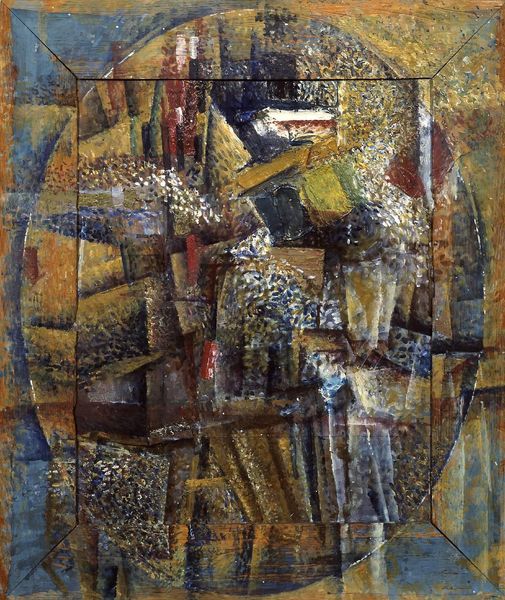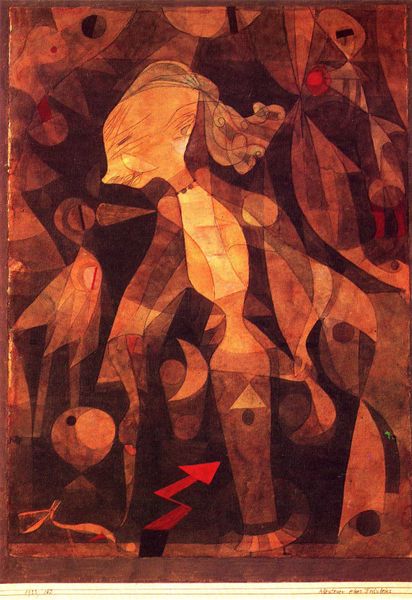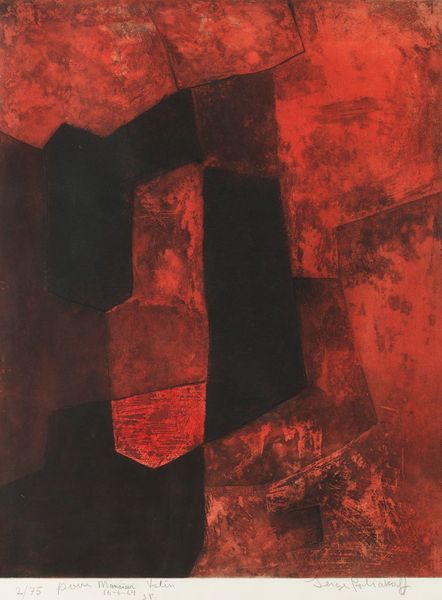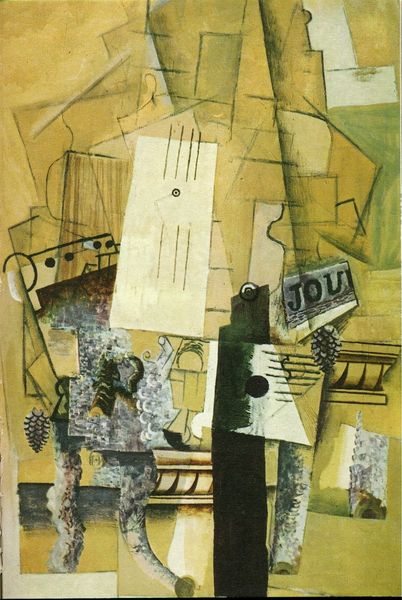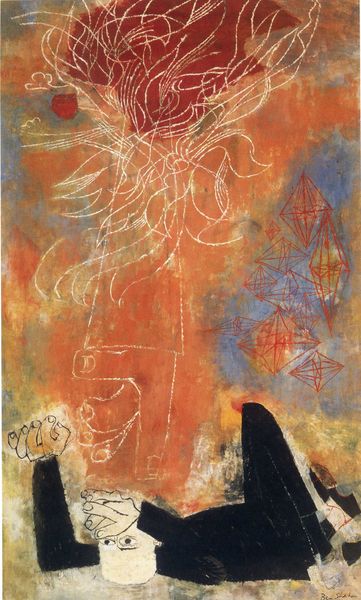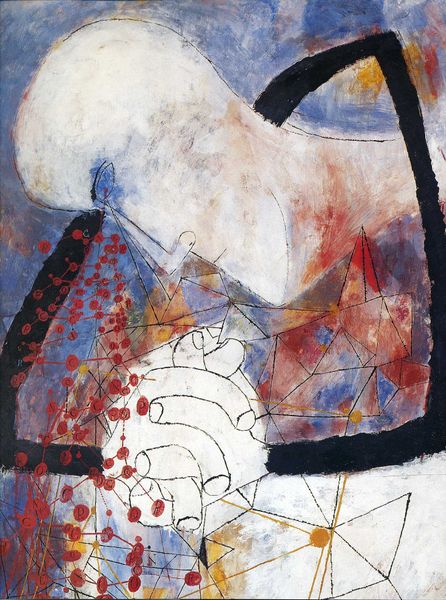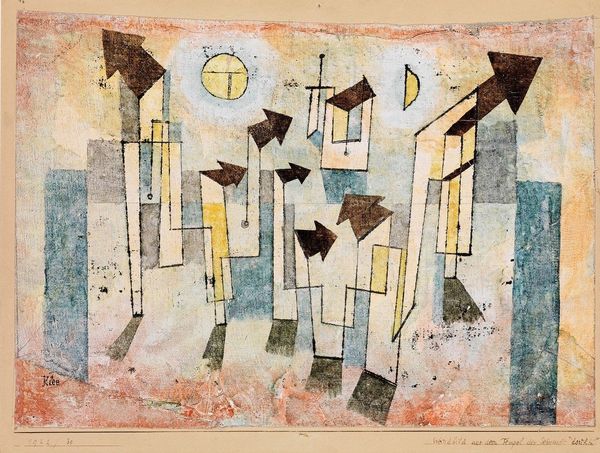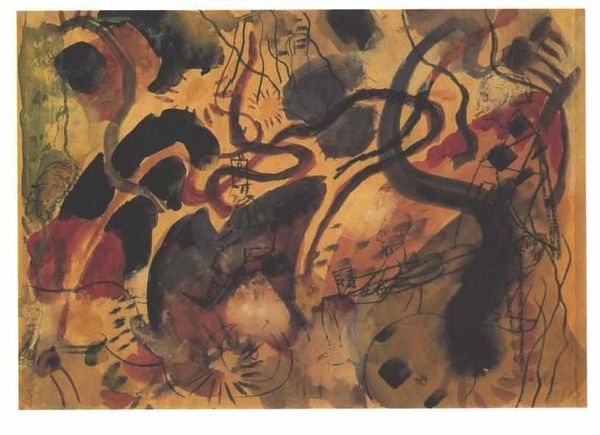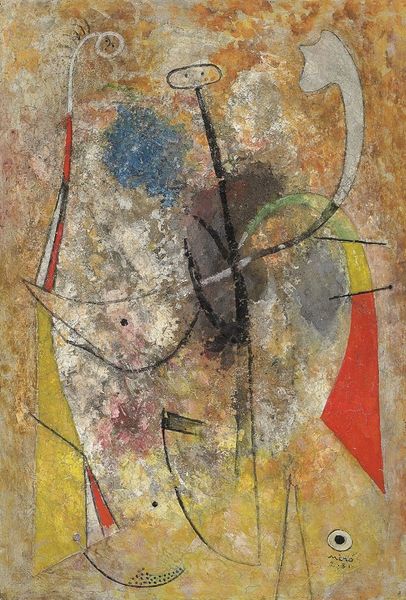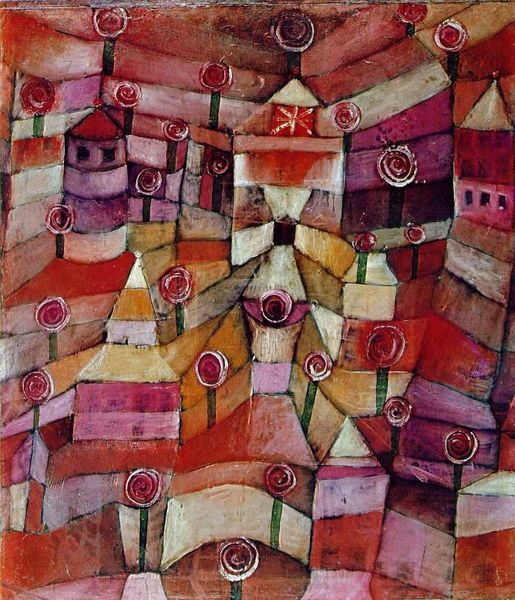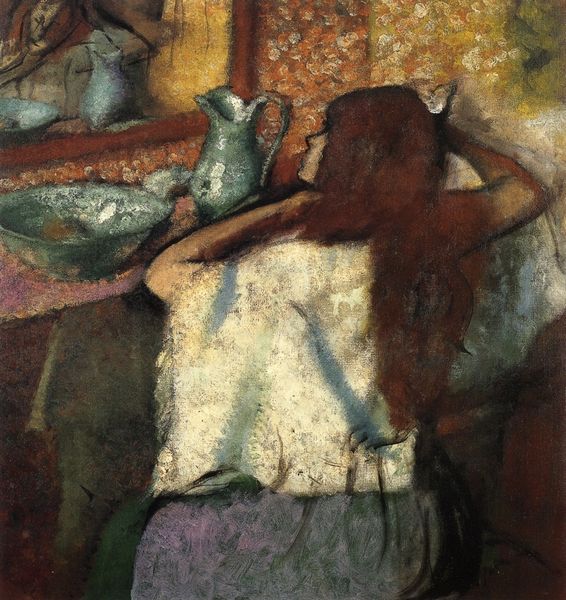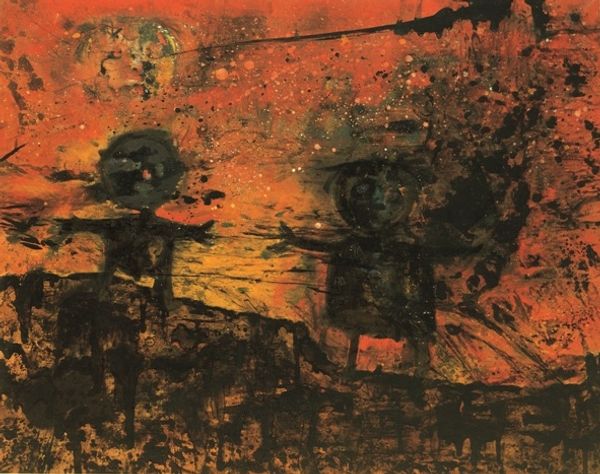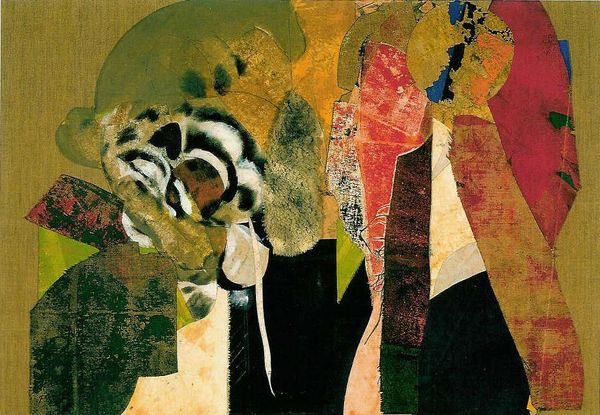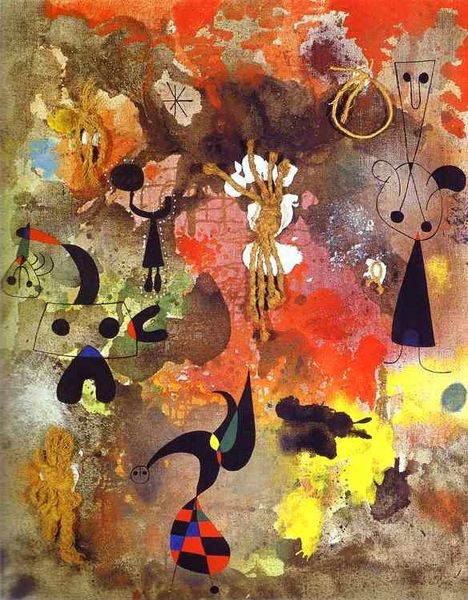
Copyright: Mordecai Ardon,Fair Use
Editor: This is "Testament of a Dead Leaf," a mixed media piece from 1959 by Mordecai Ardon. It has a somewhat melancholic mood; the dark background contrasting with these geometric shapes, making me think of decay and fragmentation. What strikes you when you look at this work? Curator: I am intrigued by the title itself. 'Testament' speaks of witnessing, of bearing evidence. The leaf, a universal symbol of life's ephemeral nature, delivers its message from beyond. Notice the interplay of organic and geometric forms, the leaf's silhouette rendered in fragmented planes. These patterns evoke both the natural world and a sense of constructed, human order. Editor: So you see that fragmentation as significant? Curator: Absolutely. Consider the cultural context: the post-war era, grappling with profound loss and societal shifts. This shattered leaf, this "testament," could symbolize broken promises, fragmented memories, a world struggling to rebuild. The symbolic language here taps into collective trauma and resilience. The dark, earthy palette evokes the cyclical nature of decay and regeneration, echoing ancient myths of death and rebirth. It prompts us to confront mortality and perhaps, discover beauty within the disintegration. Does that resonate with you? Editor: It does now! I see how the title isn't just about a leaf, but about memory and loss. It feels more profound. Curator: Exactly. Art is, after all, a mirror reflecting not only the world around us, but also our inner landscapes. Exploring symbols, like this fragmented leaf, provides avenues to navigate complicated human experiences. Editor: This has definitely shifted my perception; I was initially focused on the aesthetic. Thank you! Curator: My pleasure. Each encounter with a work of art provides opportunities to expand our understanding of history and humanity.
Comments
No comments
Be the first to comment and join the conversation on the ultimate creative platform.
